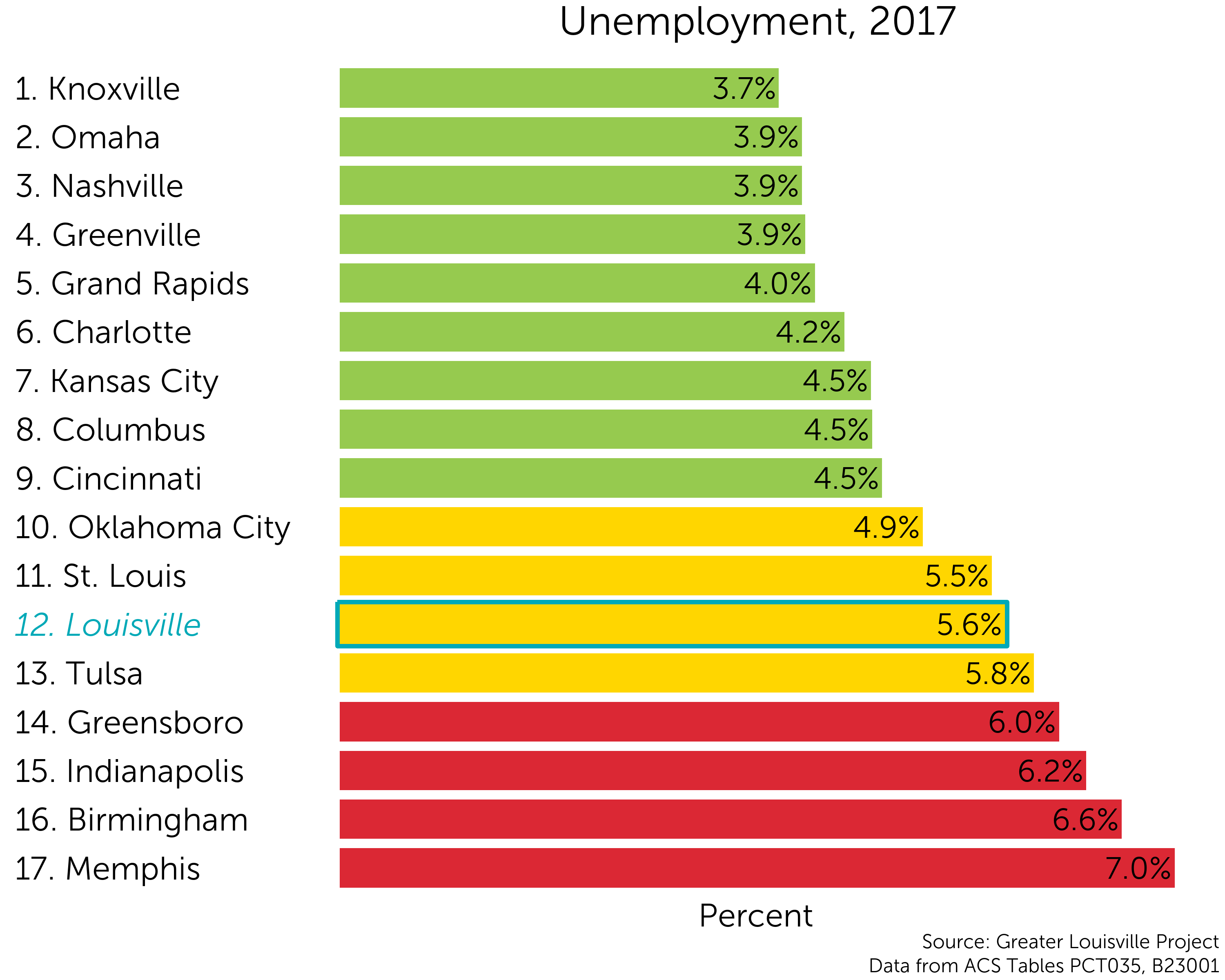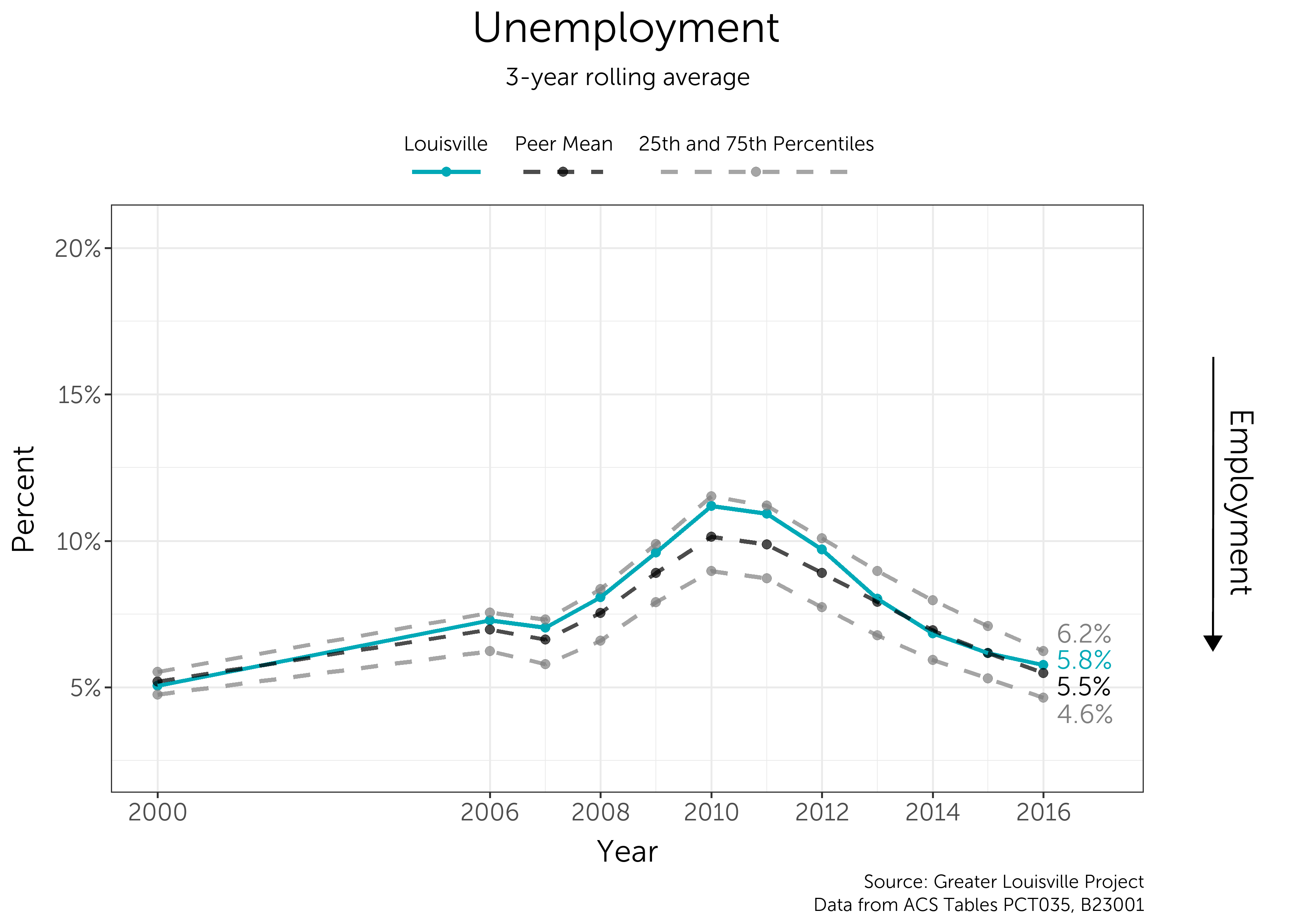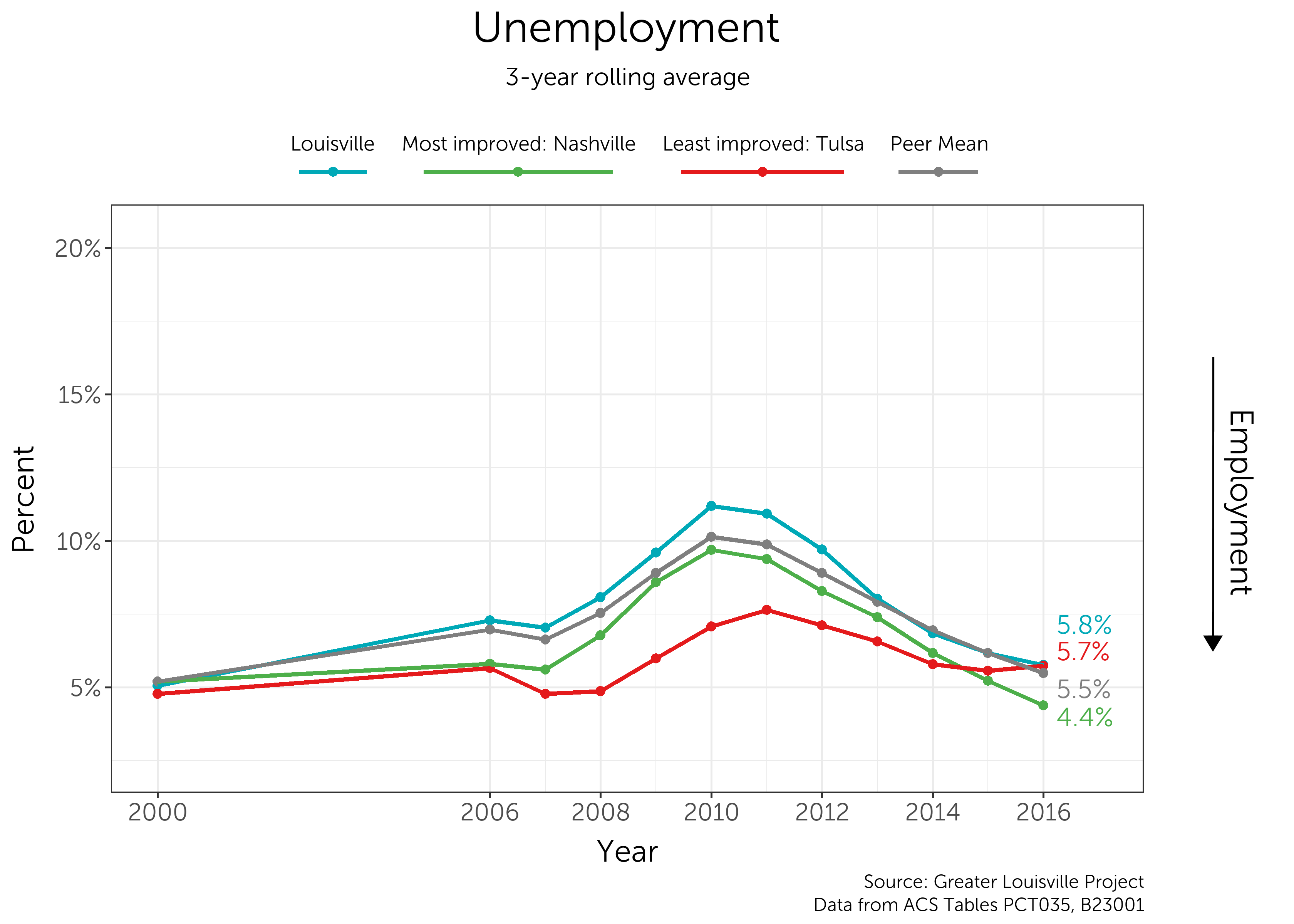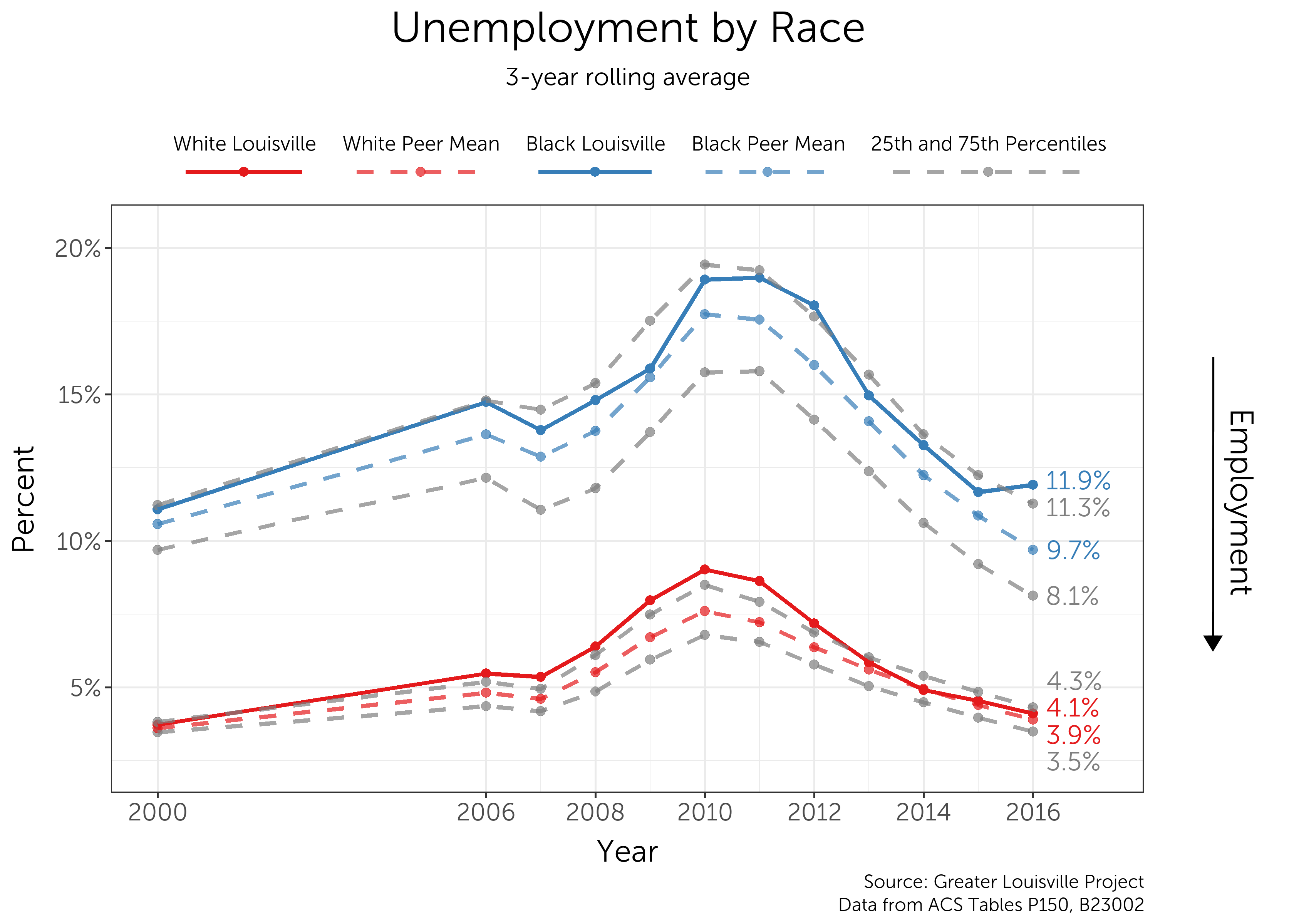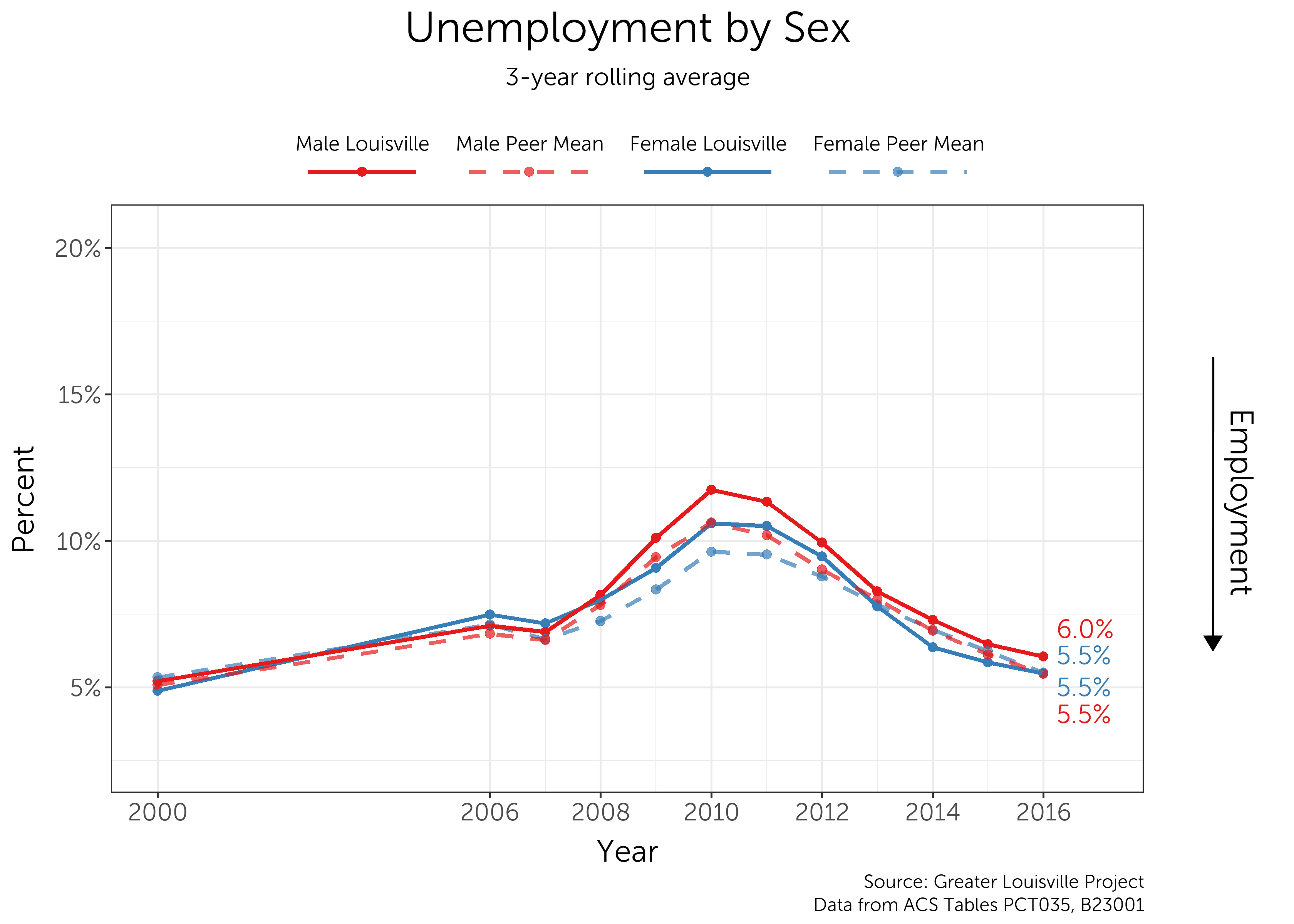Unemployment
The unemployment rate of a given economy is a key economic indicator of labor market performance. When workers are unemployed, their households lose wages and the economy as a whole loses that individual’s contribution to the economy in terms of goods and services that they would have otherwise produced. Keeping the unemployment rate at a reasonably low level is key to creating a prosperous Louisville.

